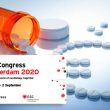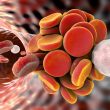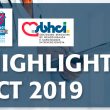Following with aspirin alone after a short period of dual antiaggregation therapy (DAPT), 1 to 3 months, did not increase ischemic events in patients receiving a Xience stent while significantly reducing bleeding. This study endorses the safety of short DAPT with contemporary drug eluting stents (DES) in patients presenting high bleeding risk. The XIENCE Short...
ESC 2020 | Ticagrelor Might Increase Bleeding and Mortality in the Elderly
Ticagrelor compared against clopidogrel produces more bleeding and also more deaths in patients over 80 recently undergoing acute myocardial infarction. Contrary to what has been observed in the general population, these data from the SWEDEHEART registry of post MI patients over 80, show higher bleeding and mortality rates with ticagrelor compared against clopidogrel. These findings...
Is Medical Treatment Better at Lowering Bleeding-Caused Mortality than Angioplasty?
Post-discharge bleeding in patients admitted for acute coronary syndrome (ACS) is linked to higher all-cause mortality. However, this is the case for both patients who underwent angioplasty and those who were managed with medical treatment. These are interesting data, given that medical treatment is frequently preferred due to lower bleeding risk. Speculation is based on...
Bleeding and Cardiogenic Shock: An “Unholy Alliance”?
Courtesy of Dr. Carlos Fava. Mortality in acute myocardial infarction (MI) with cardiogenic shock (CS) has been reduced over the past two decades. This has been possible thanks to early angioplasty, greater operator (and overall medical team) experience, new antiplatelet therapies, and ventricular assist devices, which have also been somewhat relevant in this setting. However, in...
Frailty and Bleeding: Impact on Aortic Valve Replacement
Courtesy of Dr. Carlos Fava. We are well aware that both transcatheter aortic valve replacement (TAVR) and surgical valve replacement (SAVR) generate bleeding (15% to 22% for TAVR and 22% to 44% for SAVR). Frail patients constitute a particular group. These have not yet been assessed as to the real risk they run and mortality...
Virtual ACC 2020 | Antidote for Life-Threatening Bleeding with New Anticoagulant Agents
Among patients hospitalized with life-threatening or uncontrolled bleeding under treatment with direct factor Xa inhibition, anticoagulation reversal with andexanet alfa (Andexxa) was associated with low mortality rates. These promising results have multiple limitations, particularly the lack of definition on bleeding severity. One of the studies testing the new antidote used propensity-score matching, and there were lower...
Onyx ONE: More Options for Patients at High Risk for Bleeding
Since November 2015, when the LEADERS FREE was published in NEJM, polymer-free drug coated stents had undoubtedly been the best treatment for patients at high risk of bleeding. The benefit was owed to the safety and efficacy of the polymer-free biolimus coated stent (also called umirolimus) vs. bare metal stents in the context of just...
Major Bleeding in Patients with Aspirin Plus Rivaroxaban
The combination of coronary artery disease or peripheral vascular disease and a reason for anticoagulation, such as atrial fibrillation, results in many patients who receive antiplatelet therapy with aspirin plus anticoagulation with rivaroxaban, for example. It is a well-known fact that this combination (aspirin 100 mg per day plus rivaroxaban 2.5 mg twice per day) reduces cardiovascular...
Major Bleeding in Patients with Aspirin Plus Rivaroxaban
The combination of coronary artery disease or peripheral vascular disease and a reason for anticoagulation, such as atrial fibrillation, results in many patients who receive antiplatelet therapy with aspirin plus anticoagulation with rivaroxaban, for example. It is a well-known fact that this combination (aspirin 100 mg per day plus rivaroxaban 2.5 mg twice per day) reduces cardiovascular...
TCT 2019 | MODEL U-SES: More Devices for High Risk of Bleeding and Short DAPT
Courtesy of SBHCI. This study tested the safety of dual antiplatelet therapy (DAPT) after only three months of bioresorbable polymer sirolimus DES implantation (Ultimaster). Secondary end point was following with P2Y12 inhibitor monotherapy after the first 3 months compared with aspirin. It included 1695 patients treated with sirolimus eluting Ultimaster receiving 3-month DAPT. After the...








